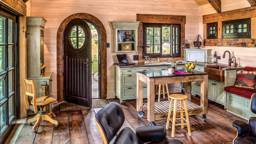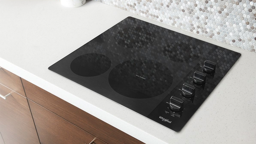
Cedar, redwood, cypress and other naturally rot-resistant woods are often hailed as the premier choice when building outside structures like decks, arbors or saunas. They have beautiful color and grain, are often aromatic, and their chemical structure can make them immune to insect and fungal pests.
However, naturally resistant wood species are not guaranteed to last any longer than pressure- or green-treated lumber. Here are some ways to help ensure your natural, beautiful and expensive wood lasts for decades, not years.
Buy Heartwood
Key point: Any of these woods, whether teak, oak, cypress, cedar or redwood, is not uniformly rot-resistant. The outer wood, called sapwood, often has minimal or non-existent rot-resistance properties. The darker heartwood has the good stuff in it – organic materials commonly referred to as extractives. With today’s increased demand for wood and more sensitive harvesting practices, much of the lumber now available is actually a mix of sapwood and heartwood. If you want wood that’s truly rot-resistant, you’ll have to pony up; heartwood can cost four times more than standard grade.
Not Maintenance-Free
I can still remember the luster of my new split-rail cedar fence. It looked fabulous, smelled like heaven … and within a year had faded to a dull gray fence that smelled like nothing much at all. Without preservative, rot-resistant woods are not going to hold up to sunlight and rain, regardless of quality. At a minimum, apply a varnish clearcoat with UV resistance every 1–2 years. In many cases, the sun’s UV rays will still come through the clearcoat and break down the colors of the wood, bleaching the pretty red and browns into a dull gray. To combat this, apply an oil-based, UV-resistant stain.
See also: Designing for a Low-Maintenance Home
Watch the Ends
Natural woods can have a distinct advantage over pressure-treated wood, which is typically only treated on the outside (this is why pressure-treated lumber is sometimes observed to have “rotted from the inside out”). Heartwoods of natural rot-resistant species are uniform in their resistance. However, the ends of the boards can be particularly vulnerable to stress from drying and moisture; dabbing the ends with sealer can further extend the life of your boards.
Beat Mother Nature to the Punch
The best part? These products not only beautify natural wood, but also provide low-maintenance, long-lasting protection against sun and rain.
Naturally Rot-Resistant Species:
-
Redwood
-
American mahogany
-
Cypress
-
Western red cedar
-
Pacific yew
-
Teak
-
Black walnut
-
White oak
-
Juniper
See also: The Complete Guide to Log Cabin Finishes










